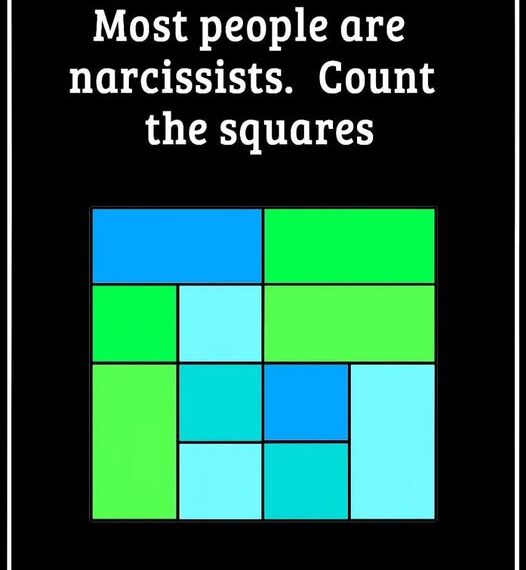If you really want to test your friends (or stir up a little harmless chaos), share the image and ask:
“How many squares do you see?”
Don’t give them hints. Don’t offer the answer.
Just watch how they react:
- Some will answer immediately, full of confidence.
- Some will insist their answer is correct.
- Others will second-guess and start over.
- A few will say, “This is stupid” (that’s ego defense too).
It’s a small experiment in human psychology—wrapped up in a kid’s puzzle.
What You Can Learn About Yourself
This puzzle is a reminder that the obvious answer is rarely the complete one.
It asks:
- Are you observant enough to see more?
- Are you humble enough to admit you missed something?
- Are you curious enough to dig deeper?
If you said yes to all three, congrats—you’re probably not a narcissist. 😉
But seriously, the point isn’t to label people. It’s to spark curiosity, awareness, and maybe a little humility.
Final Thoughts
A simple puzzle with some squares has gone viral for good reason—it exposes how we think, how we judge, and how we react when we’re challenged.
So next time you see one of these:
- Pause.
- Breathe.
- Look again.
Because the difference between 16 and 30 isn’t just math… it’s mindset.
TL;DR – Quick Recap
- The puzzle asks you to count all the squares in a grid.
- Most people stop at 16, missing all the larger square combinations.
- The correct answer (in a standard 4×4 grid) is typically 30.
- The puzzle plays with your perception, ego, and confidence.
- It’s a metaphor for how we process information and how we handle being wrong.
👀 Ready to Test Yourself?
Try the puzzle now:
Count every square. Don’t stop at the obvious ones. Can you find them all?




